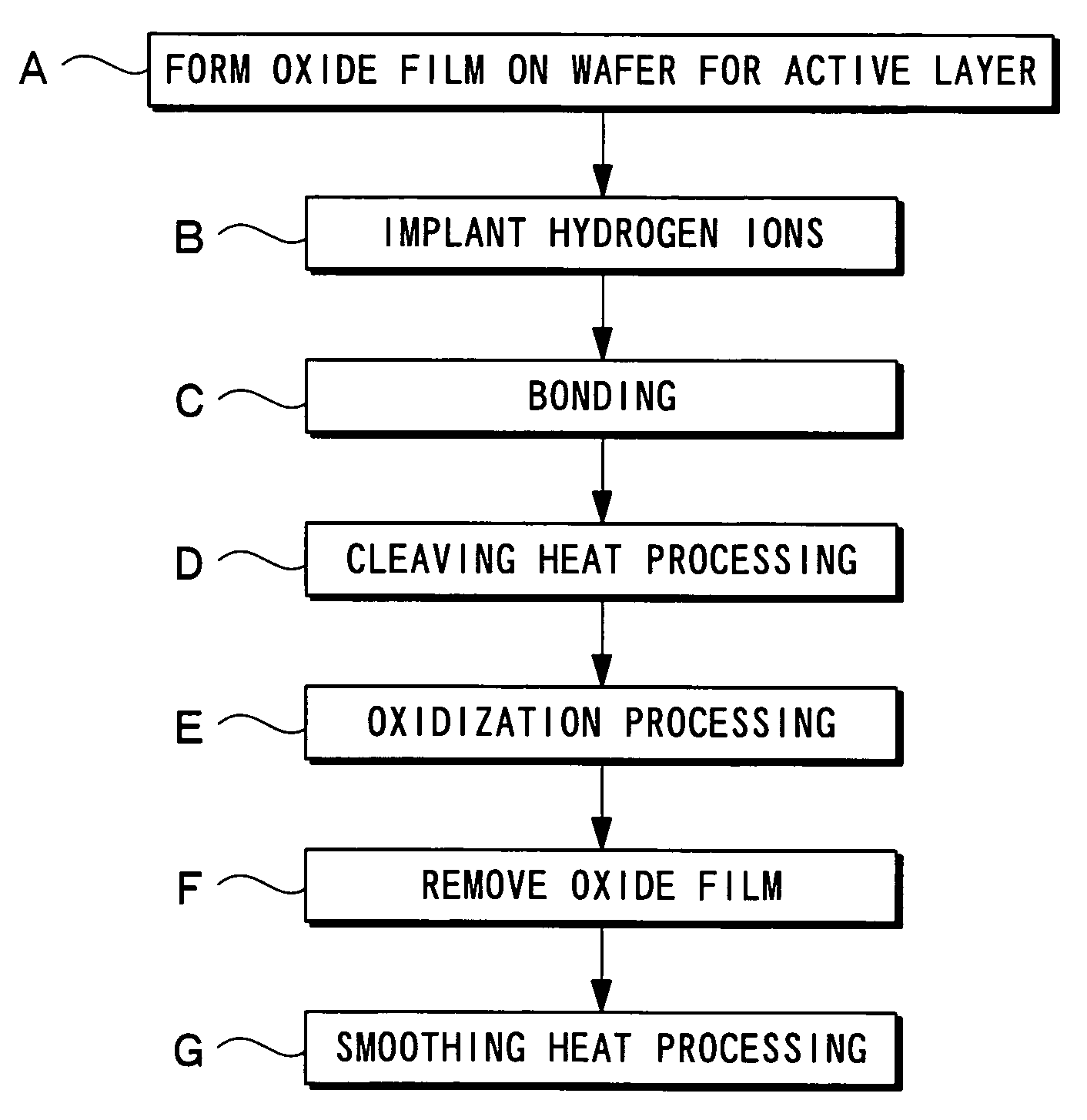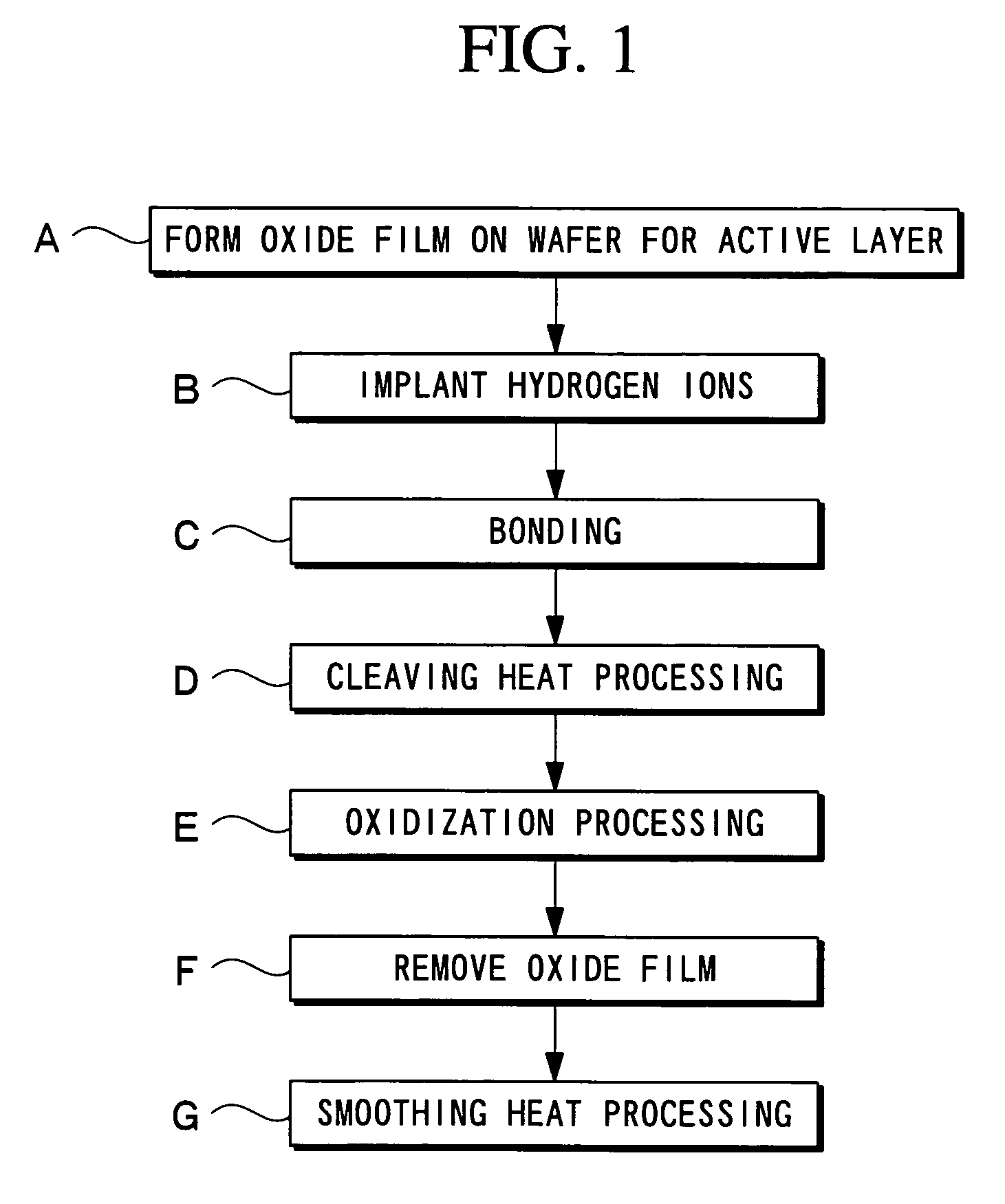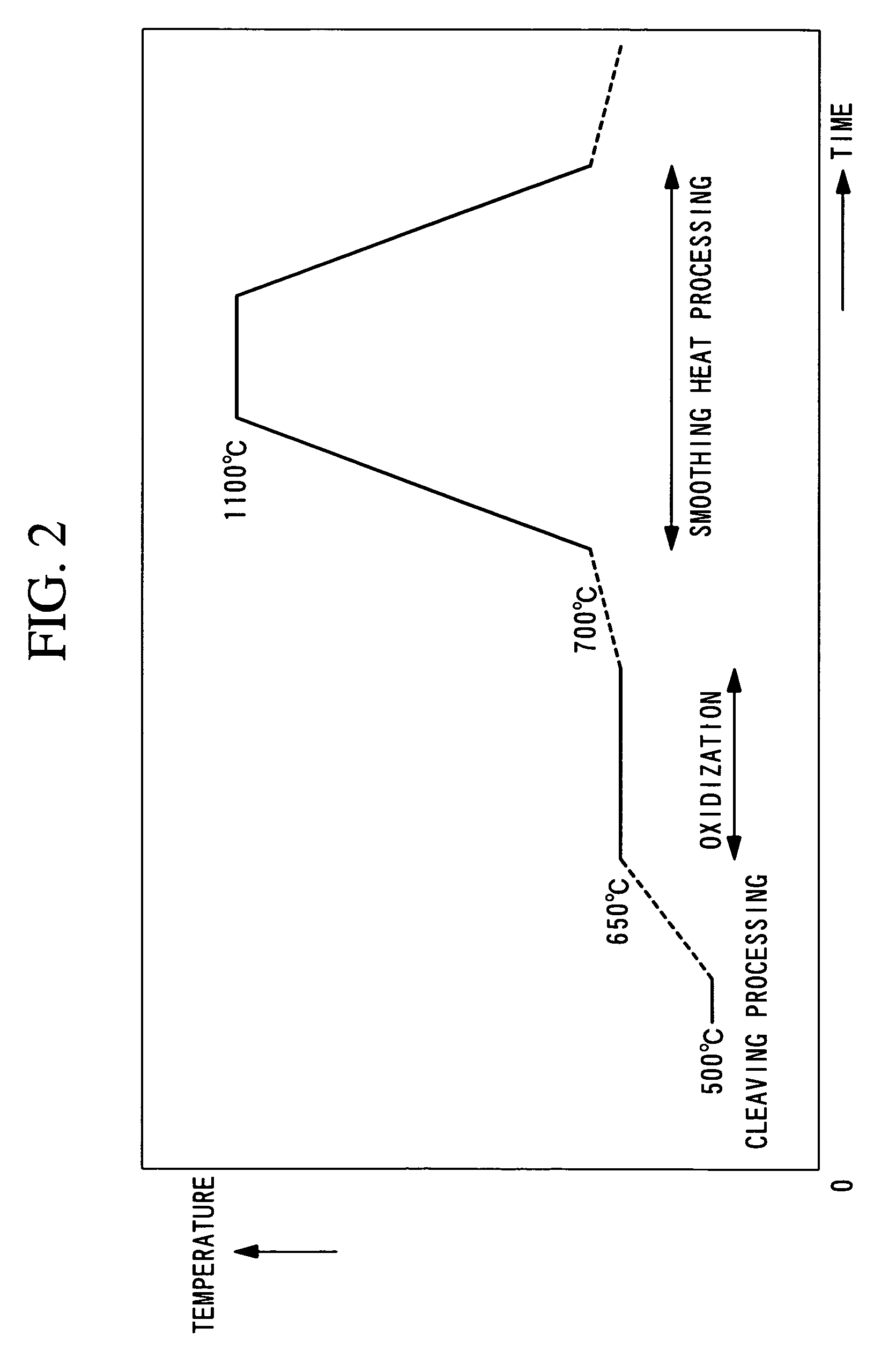Process for producing SOI wafer
a silicononinsulator and soi technology, applied in the direction of basic electric elements, electrical apparatus, semiconductor devices, etc., can solve the problems of uneven polishing layer amount, difficult to obtain uniform film thickness distribution in the soi layer, and etching irregularities tend to occur
- Summary
- Abstract
- Description
- Claims
- Application Information
AI Technical Summary
Benefits of technology
Problems solved by technology
Method used
Image
Examples
Embodiment Construction
[0032]An embodiment of this invention will now be described with reference to FIGS. 1 and 2.
[0033]Here, a process for producing an SOI wafer in which an SOI layer is formed using a Smart Cut method is described.
[0034]The production of an SOI wafer using a Smart Cut method according to the present embodiment is achieved using steps such as that shown in A to G in FIG. 1.
[0035]Firstly, two silicon wafers are prepared by taking slices from a silicon ingot that has been grown using a CZ method and doped with boron. One of these two silicon wafers is used for an active layer, while the other silicon wafer is used for base. Moreover, as is shown in step A in FIG. 1, an oxide film is formed on a surface of the silicon wafer that is used for the active layer. The oxide film is formed by placing the silicon wafer inside an oxidization furnace and then heating it at a predetermined temperature for a predetermined length of time. At this time, the thickness of the oxide film that is formed is ...
PUM
 Login to View More
Login to View More Abstract
Description
Claims
Application Information
 Login to View More
Login to View More - R&D
- Intellectual Property
- Life Sciences
- Materials
- Tech Scout
- Unparalleled Data Quality
- Higher Quality Content
- 60% Fewer Hallucinations
Browse by: Latest US Patents, China's latest patents, Technical Efficacy Thesaurus, Application Domain, Technology Topic, Popular Technical Reports.
© 2025 PatSnap. All rights reserved.Legal|Privacy policy|Modern Slavery Act Transparency Statement|Sitemap|About US| Contact US: help@patsnap.com



